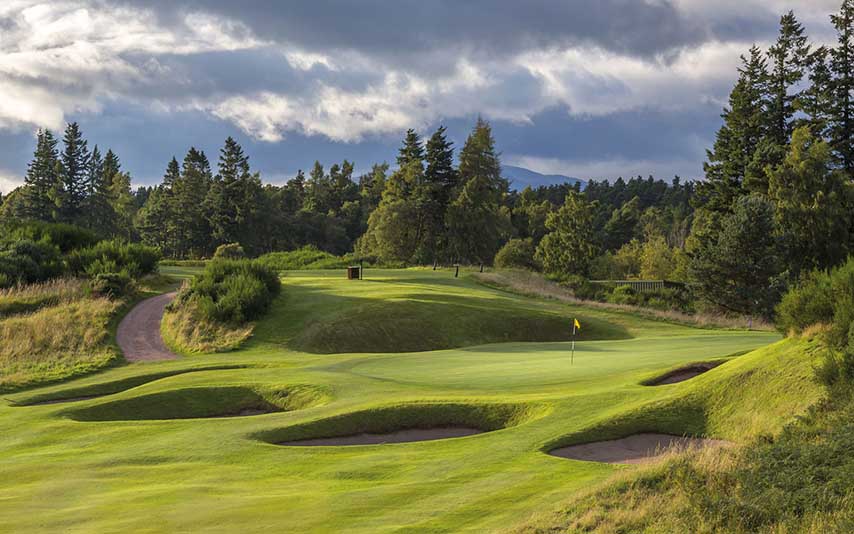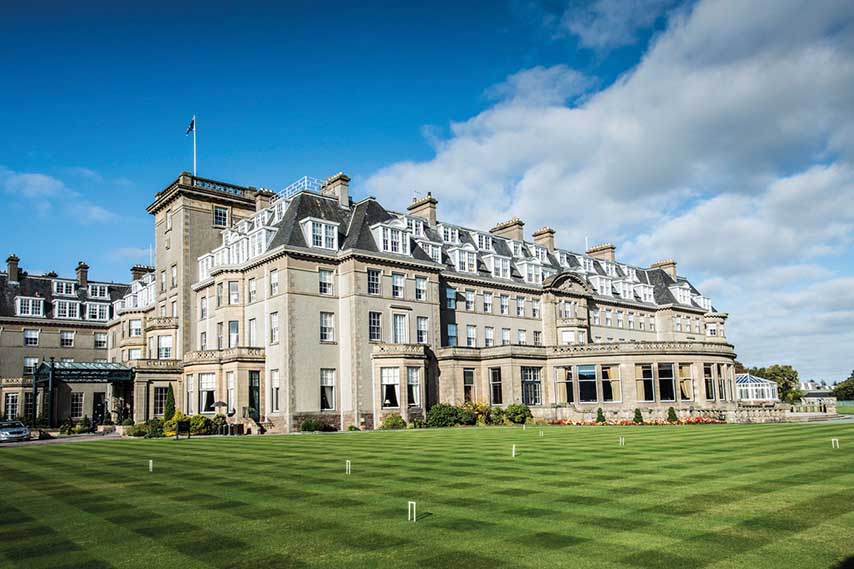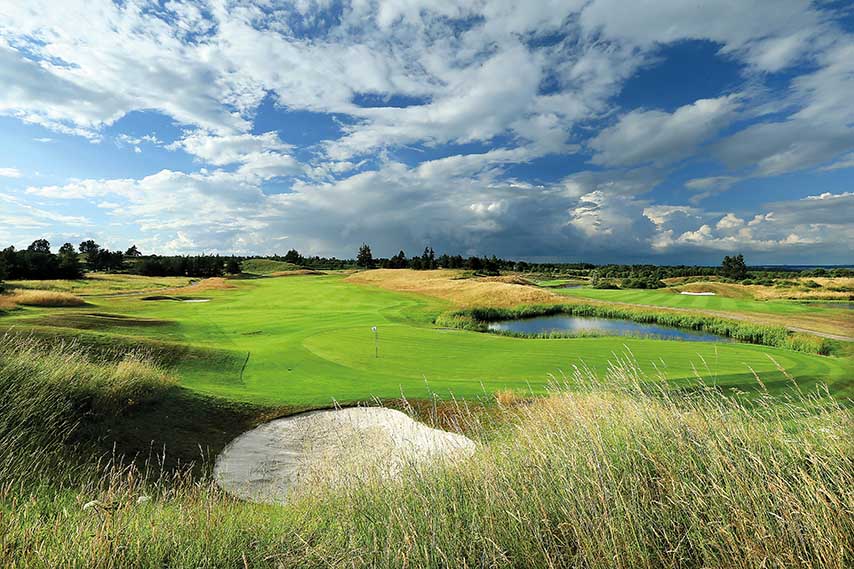Third time lucky? The European team will have the opportunity in September of wresting the title of Solheim Cup champions from the Americans who have held it since 2015. The battlefield for this biennial event will be the PGA Centenary Course in Gleneagles (Scotland), where another bloodless but also exciting battle was fought in 2014: the Ryder Cup, with Europe winning and retaining the title. This time, the women’s teams captained by Scotland’s Catriona Matthew and American Juli Inkster have their date with history at Gleneagles starting on 13 September. At the time of going to press, two Spaniards were among the provisional qualifiers: Carlota Ciganda and Azahara Muñoz.
The PGA Centenary Course proved to be a formidable challenge for 18-time Grand Slam winner and acclaimed golf course designer Jack Nicklaus. It had to be a really great course, as it was in the heart of Scotland, the sport’s birthplace. Fortunately, the Golden Bear saw all his expectations fulfilled when, for the first time, he viewed the plot where his design commission would be materialised. He defined it as "the best land in the world that I have been given to do my job".

It needed to be an outstanding challenge, a course that would test the best professionals while, in the immortal phrase of Bobby Jones, “offering problems that a player can try to resolve according to their ability... that a beginner never despairs, nor that an expert ever lacks concern or interest".
Opened in 1993, the PGA Centenary Course was the object of a major renovation in 2012 focused on hosting the 2014 Ryder Cup. It is the most modern of the three Gleneagles Hotel resort courses (King's and Queen's both date from1919, while the hotel opened in 1924).
The setting for the next Solheim Cup is a perfect example of how to combine the design of both a Scottish and an American course, with large areas of rough and wide fairways. The PGA Centenary Course is a modern classic and its design was a huge challenge even for a golf architect as renowned as Nicklaus.

The par-72, 6,671-metre course (the longest inland Scottish layout) has five tees on each hole and, with many of the greens protected at the front, the key to achieving a low score is in the approach shots.
One outstanding feature of the PGA Centenary Course are views of the spectacular surrounding countryside where the Gleneagles resort is located. From the second green, players can marvel at the lush panorama of the Perthshire landscape, with the mountains as a backdrop.
If you want to enjoy the PGA Centenary Course as a spectator during the Solheim Cup, there is still time as tickets remain available. For Friday and Saturday, the price is £40 (€44) per day, and for Sunday it costs £50 (€55). A pass for the entire tournament, including the opening ceremony on Wednesday the 12th, is £120 (€133). Tickets (there are more options than those cited) can be purchased through the event’s official website: solheimcup2019.com.
If, as would be expected, you want to play this course designed by Nicklaus, the price is not too crazy: depending on the time of year, it costs between £80 and £250 (€88 and €277). The most expensive rate is, in fact, the fortnight after the Solheim Cup, from September 16 to 30.

It All Began with a Railway Line
The Gleneagles Hotel’s grand opening gala was on 7 June 1924 but its history began 14 years before that momentous day. In 1910, Donald Matheson, general manager of the Caledonian Railway Company, was on holiday in Strathearn. His railway line ran through the valley and, as it was the era of “grand hotels”, he was so impressed by the surrounding countryside in Scotland that he conjured up the vision of a large country house hotel, built in the style of a palace which would provide leisure in the form of golf to the travelling public.
In 1913, the Gleneagles Ltd company was formed to build and manage the hotel and golf courses, but World War I caused the project to be paralysed. After the war, Matheson commissioned James Braid, winner of five British Opens between 1901 and 1910, to design the King’s and Queen’s Courses, which opened in 1919. It would take a few years for the hotel to be completed, before it was finally inaugurated in 1924. Reports of the time described it as “a Riviera in the Highlands" and "the eighth wonder of the world".




